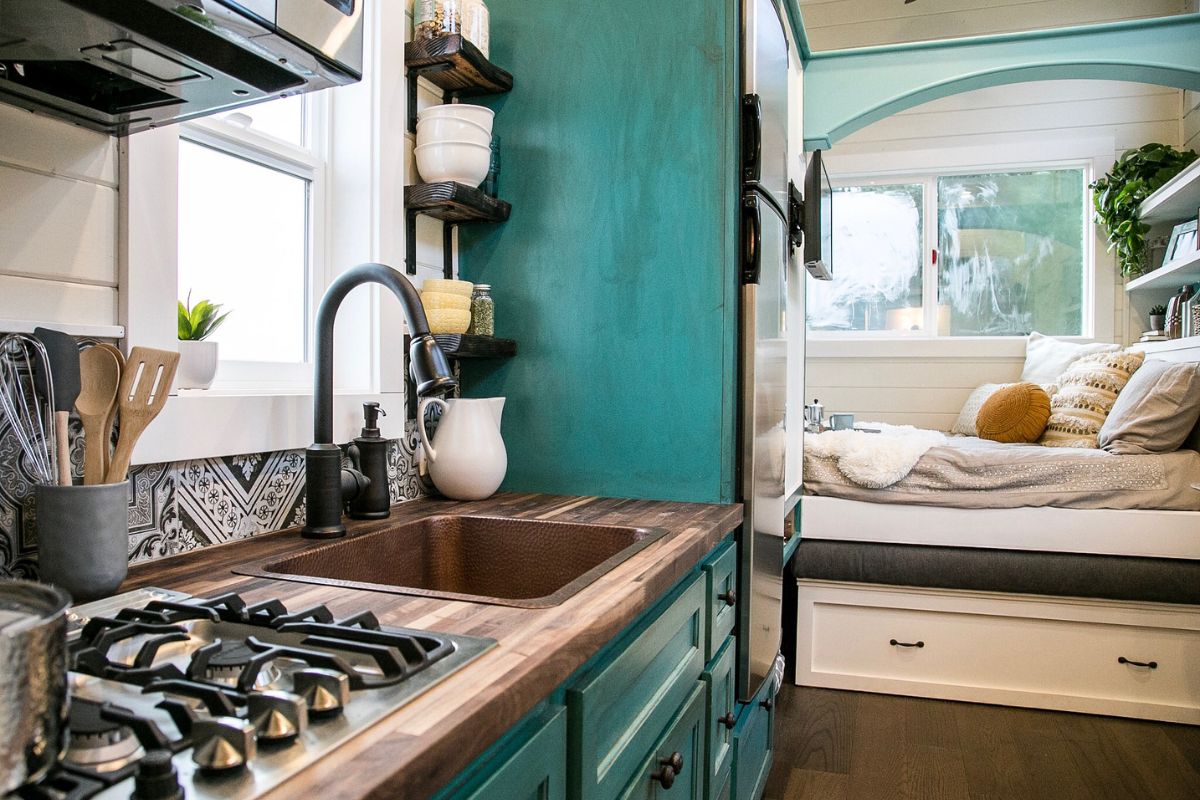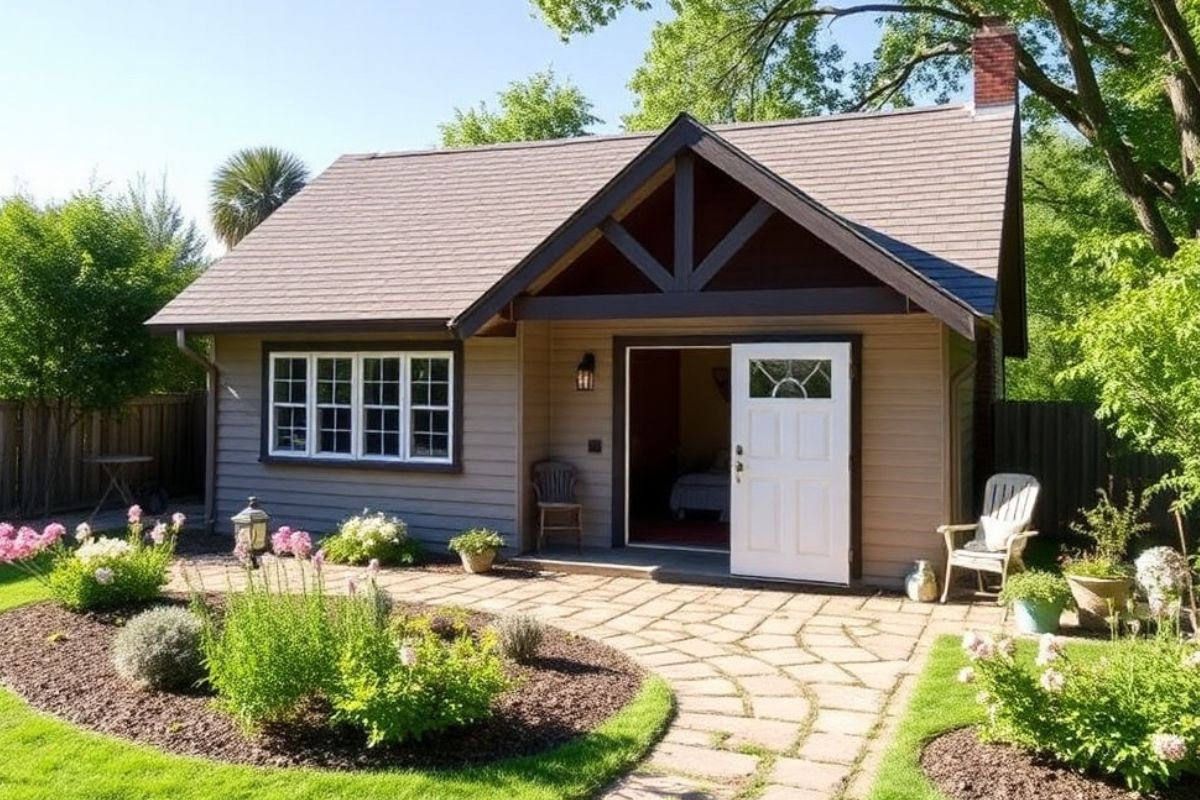The tiny home movement is everywhere these days. And honestly, I get it. There's something incredibly appealing about ditching the mortgage, simplifying your life, and reducing your environmental footprint all at once.
But here's what most people don't realize until they're knee-deep in the planning process: designing a tiny home isn't just about making everything smaller. You can't take a regular house layout and shrink it down like you're hitting ctrl+minus on your computer. It doesn't work that way.
I've seen too many tiny homes that look gorgeous in photos but are absolutely miserable to live in. Why? Because the owners focused on aesthetics without thinking about how the space actually functions day-to-day.
So let's talk about four design strategies that actually work. These aren't just pretty ideas--they're practical solutions I've seen transform cramped, cluttered tiny homes into spaces people genuinely love living in.
Tip 1: Optimize Vertical Space
Floor space in a tiny home is like prime real estate in Manhattan--every square inch costs you. So stop thinking horizontally and start looking up.
I'm talking about more than just throwing up a few shelves (though wall-mounted storage is definitely part of it). Think about how you can use every inch from floor to ceiling. Those 9-foot ceilings are not just for show.
Take kitchen storage, for example. Instead of standard cabinets that stop at eye level, go all the way up. Yes, you'll need a step stool for the top shelves, but that's where you'll store the stuff you don't use daily--holiday dishes, bulk pantry items, that bread maker you swore you'd use more often.
And loft beds aren't just for college dorms. A well-designed sleeping loft can free up your entire main floor for living space. The key is making those stairs work double duty. I've seen designs where each step is actually a drawer. Brilliant, right?
But here's something most people miss: vertical design makes your space feel bigger, not just function better. When you draw the eye upward with tall bookshelves or hanging plants, the room suddenly feels less cramped. It's a psychological trick that actually works.

Tip 2: Prioritize Multifunctional Furniture
In a tiny home, furniture that only does one job is basically dead weight. Every piece needs to earn its keep by pulling double or triple duty.
I'm not talking about those flimsy convertible pieces that break after six months. Invest in quality furniture that's actually designed to multitask. A solid dining table that doubles as a workspace? Perfect. A storage ottoman that's sturdy enough for daily seating? Yes, please.
One of my favorite examples is the Murphy bed. During the day, your bedroom becomes a living room, office, or yoga studio. At night, you pull down the bed and you've got a comfortable sleeping space. It's like having two rooms in the space of one.
Drop-leaf tables are another game-changer. Meal for two? Use it small. Hosting friends? Extend it out. Need workspace? It's your desk. Not using it? Fold it away and reclaim your floor space.
The bonus here is that multifunctional furniture tends to have cleaner, simpler lines. Less visual clutter means your space feels more open and--surprise--more minimalist.
Tip 3: Incorporate Natural Light and Reflective Surfaces
Want to know the fastest way to make a tiny space feel claustrophobic? Block the natural light. Nothing shrinks a room faster than dark corners and artificial lighting during the day.
Windows are your best friend here, but placement matters. A single large window often works better than several small ones--it creates a focal point and floods the space with light. And don't forget about skylights, especially in loft areas. They bring in light without sacrificing wall space or privacy.
Now, here's where things get interesting: mirrors aren't just for checking your appearance. Place a large mirror opposite a window and watch what happens. The light bounces around the room, making everything brighter and creating the illusion of depth. It's like adding square footage without actually building anything.
Color choices matter too. I know, I know--white walls can feel boring. But in a tiny space, light colors reflect more light and make everything feel bigger. You can always add personality with colorful accessories that you can change seasonally.
Glass surfaces work similarly to mirrors. A glass dining table or acrylic chairs maintain sight lines while still providing function. The result? Your space feels open and airy instead of cramped and cluttered.

Tip 4: Invest in Quality Appliances
Here's where a lot of people try to save money and end up regretting it. In a tiny home, your appliances work harder than they would in a regular house. That mini-fridge? It's your only fridge. That compact washer-dryer combo? It's handling all your laundry needs.
Cheap appliances break down faster, and when you're living in 400 square feet, a broken appliance isn't just inconvenient--it's a major disruption to your entire life.
Look for compact appliances that don't compromise on performance. A good induction cooktop takes up minimal counter space but cooks just as well as a full-size range. A combination oven that bakes, broils, and toasts eliminates the need for multiple appliances cluttering your counters.
For cleaning, something like Shark Cordless Vacuums is perfect for tiny homes. They're powerful enough to handle daily cleaning but compact enough to store in a small closet. Plus, no cord means you can easily clean those hard-to-reach loft areas.
Buy appliances with good warranties and readily available parts. When you're living tiny, you can't afford to be without essential appliances for weeks while waiting for repairs.
Conclusion
Building a minimalist tiny home that actually works isn't about following a rigid set of rules--it's about making smart choices that fit your lifestyle.
These strategies work because they address the real challenges of tiny living: limited space, the need for flexibility, and the importance of creating a home that feels good to live in, not just look at.
The best tiny homes don't feel tiny. They feel intentional. Every element serves a purpose, nothing is wasted, and the result is a space that supports the life you want to live.
Whether you're planning to build, buy, or just dreaming about downsizing, remember this: successful tiny living isn't about having less--it's about having exactly what you need, and nothing you don't.






Share: